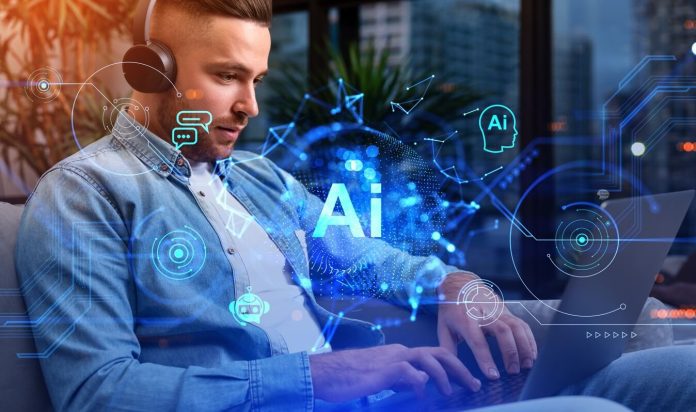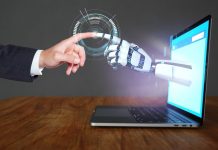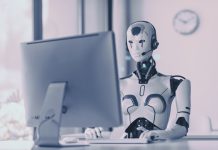More and more companies are leveraging data and deep machine learning algorithms, leading to the emergence of the “AI factory” model. As with any transformation however, knowing the keys to success makes the difference. This article explores those factors.
1. The AI factory paradigm shift
The beginnings of artificial intelligence (AI) can be traced back to Alan Turing’s visionary ideas in the 1950s. Today, AI drives many successful businesses such as Netflix’s video recommendations1, Airbnb’s assorted rentals, Google search, and Hubspot’s copilot software codes2
Although often used interchangeably, AI and digital technologies differ, with AI representing a more powerful subset focused on tasks requiring human intelligence. With these unique characteristics, the emergence of the “AI factory” model has marked a significant paradigm shift, where companies are leveraging data and deep machine learning algorithms at their core.
Many companies are moving towards this new AI factory model, including incumbents. Companies such as Lockheed Martin3, BBVA4, Cleary Gottlieb5 and EQT Ventures6 present a variety of applications, from transactional legal processes to the reorganisation of venture capital deal flows. The current evolution of AI is evident, particularly in the high-tech and B2C sectors.
There are also reports of significant gains for companies leveraging AI. UK-based Ocado Retail customers are using Ocado’s flagship deep learning model of inventory replenishment7 to boost product availability from 90% to over 98%. Webhelp, a French company founded in 2000 at the dawn of the internet age as an online customer support interface, has transformed its model into an AI factory. Using an architecture based on UiPath Orchestrator, the data analytics factory constantly provides new, factual lead generation data, enriches information data from the corporate universe while workers can directly and seamlessly obtain and share information through a set of powerful user interfaces, and provide user feedback to continuously improve the platform. Webhelp reports productivity increases of up to 40%8 in some lead generation projects that were originally conducted blind, outside its AI factory model. Moderna used AI algorithms9 to cut the development of its COVID-19 vaccine by a factor of 20 in just 65 days, a process that would previously have taken years. Chinese company ByteDance10 has adopted the AI factory approach with its flagship TikTok product, which automatically delivers a direct stream of short, personalised videos to users, instead of relying on recommendations. This user switch makes the platform the market leader in short videos, despite YouTube’s leadership for at least a decade.
But as with the first era of digital transformation, transforming AI doesn’t seem so easy11. What are the key elements for success in the right AI factory?
2. Five Key Success Factors
1. The art of strategic renewal
Digital technologies are “strategic” in nature12. When it comes to strategic change, digital transformation has paid off handsomely when incumbent companies have linked their transformation to a major renewal of their strategy. The same should be true of AI transformation. A clear case study in the media can illustrate this point: when the New York Times successfully migrated to a “reader-first paradigm”13, with its online paywall model. As part of this strategic shift, the paywall is both a billing mechanism and an elaborate readership personalisation system that attracts and retains readers over the long term with the compelling content they seek out. Personalisation is in turn continuously triggered by open data collection and additive microsegmentation, and leveraged by the move to an agile AI factory model.
2. Data is the new oil, but it needs a refinery
The supply chain of your data is essential in the AI factory – you need to understand where it comes from, how it’s stored, its traceability, and how it’s used. In general, dataOps is a crucial methodology for managing the data supply chain, but it’s lacking in the majority of companies.
3. People have a professional future
One of the paradoxes of AI has been the emphasis on a work-less future14, in which AI will replace much human activity. Contrary to this prevailing thinking, the success of the AI factory still depends on many human skills. As an example, BBVA’s AI Factory Center15 counts 150 people among its 1,000-strong analytics community and incorporates multidisciplinary profiles, including data scientists, software engineers and developers, data architects, as well as “business translators” who define the technical and commercial role of AI.
In fact, a comprehensive analysis of people skills and AI that we recently conducted with Accenture Research16 concluded that successful AI adoption requires the skills of the entire workforce to be adjusted. We see that adapting the skills of the entire workforce to the new AI operating model, and training leaders to master this new operating model, are two additional crucial elements in leveraging AI.
4. Your AI must be more trustworthy than your current brand
Whether it’s beneficial AI, responsible AI or trustworthy AI17, the various terminological variants always remind us that AI needs fundamental trust to thrive18. As AI is automating decisions in more and more mission-critical use cases, it’s important to add some accountability to the whole system19. After all, most reputable companies have faced serious problems when using AI, for example when Microsoft’s chatbot was on the verge of spreading hate speech, or when Amazon’s online recruitment tended to favour a certain gender or race. In general, the issue of trust can only grow with the use of Generative AI, and with Large Language Models (LLMs) being mostly opaque, and relying on possible data bias.
5. Innovation is radical, not incremental
Innovation relies on establishing and embedding a culture of innovation, enriched by experimentation. Especially in the context of AI, innovation is a question of business model. The top quartile of AI companies at scale often engage in a platform strategy and collaborate with ecosystem partners. In 2020, for example, American Express partnered with the Indian Institute of Technology Madras to create a “Data Analytics, Risk and Technology” lab. Microsoft has opened its AI Factory to startups in Europe in fields as varied as healthcare, green energies and agri-food.
There are a large set of new business models emerging thanks to AI, such as immersive AI, global AI Marketplace, Computing, or AI as service, and a plethora of new models such as copilots attached to generative AI. In general, the companies mastering the AI factory are at the frontier of experimenting with those models. Are you ready to follow suit?
About the Author
 Jacques Bughin is the CEO of MachaonAdvisory and a former professor of Management. He is retired from McKinsey as senior partner and director of the McKinsey Global Institute. He advises Antler and Fortino Capital, two major VC/PE firms, and serves on the board of several companies.
Jacques Bughin is the CEO of MachaonAdvisory and a former professor of Management. He is retired from McKinsey as senior partner and director of the McKinsey Global Institute. He advises Antler and Fortino Capital, two major VC/PE firms, and serves on the board of several companies.
References
- Artificial Intelligence at Netflix – Two Current Use-Cases. 10 January 2022. Emerj. https://emerj.com/ai-sector-overviews/artificial-intelligence-at-netflix/
- GitHub Copilot: Everything You Need to Know. 31 October 2023. HubSpot. https://blog.hubspot.com/website/github-copilot
- Accelerating Artificial Intelligence (AI) at Scale. 05 May 2022. Lockheed Martin. https://www.lockheedmartin.com/en-us/news/features/2022/accelerating-artificial-intelligence-ai-at-scale.html
- How we drive innovation at AI Factory?. BBVA. https://www.bbvaaifactory.com/
- Cleary Gottlieb Launches ClearyX, A Platform for Highly Efficient, AI and Data-Driven Legal Services. 23 June 2022. ClearyX. https://clearyx.legal/2022/06/23/cleary-gottlieb-launches-clearyx-a-platform-for-highly-efficient-ai-and-data-driven-legal-services/
- EQT’s AI platform Motherbrain pushes the boundaries of the private markets with novel algorithm for better decision making. 05 November 2021. EQT Group. https://eqtgroup.com/news/2021/eqt-s-ai-platform-motherbrain-pushes-the-boundaries-of-the-private-markets-with-novel-algorithm-for-better-decision-making/
- What are Stockouts? (+ How to Prevent Out of Stocks in 2024). 13 June 2023. Shopify. https://www.shopify.com/retail/what-causes-a-stockout
- HOW WEBHELP ENTERPRISE OPTIMISED LEAD GENERATION IN THE B2B SECTOR. Artefact. https://www.artefact.com/cases/how-webhelp-enterprise-optimised-lead-generation-in-the-b2b-sector/
- Moderna leveraging its ‘AI factory’ to revolutionise the way diseases are treated. 17 May 2021. ZDNET. https://www.zdnet.com/article/moderna-leveraging-its-ai-factory-to-revolutionise-the-way-diseases-are-treated/
- Artificial Intelligence Factory, Data Risk, and VCs’ Mediation: The Case of ByteDance, an AI-Powered Startup. 02 May 2021. MDPI. https://www.mdpi.com/1911-8074/14/5/203
- Now It is Time for AI Transformation. 19 September 2023. The European Business Review. https://www.europeanbusinessreview.com/now-it-is-time-for-ai-transformation/
- 6 Digital Strategies, and Why Some Work Better than Others. 31 July 2017. Harvard Business Review. https://hbr.org/2017/07/6-digital-strategies-and-why-some-work-better-than-others
- Disruptive Innovations and Paradigm Shifts in Journalism as a Business: From
Advertisers First to Readers First and Traditional Operational Models to the AI Factory. 2022. Sage Pub. https://journals.sagepub.com/doi/pdf/10.1177/21582440221094819
- Artificial Intelligence, Its Corporate Use and How It Will Affect the Future of Work. 27 June 2020. SpringerLink. https://link.springer.com/chapter/10.1007/978-3-030-46143-0_14
- BBVA AI Factory, among the world’s best financial innovation labs, according to Global Finance. 18 May 2021. BBVA. https://www.bbva.com/en/innovation/bbva-ai-factory-among-the-worlds-best-financial-innovation-labs-according-to-global-finance/
- The art of AI maturity. Accenture. https://www.accenture.com/us-en/insights/artificial-intelligence/ai-maturity-and-transformation
- NRI 2023: Translating AI Principles Into Industry Practice. 2023. Portulans Institute. https://portulansinstitute.org/translating-ai-principles-into-industry-practice/
- A Unified Framework of Five Principles for AI in Society. 02 July 2019. HDSR. https://hdsr.mitpress.mit.edu/pub/l0jsh9d1/release/8
- How can we ensure trustworthy AI?. 22 August 2022. Technology Magazine. https://technologymagazine.com/ai-and-machine-learning/how-can-we-ensure-trustworthy-ai







































